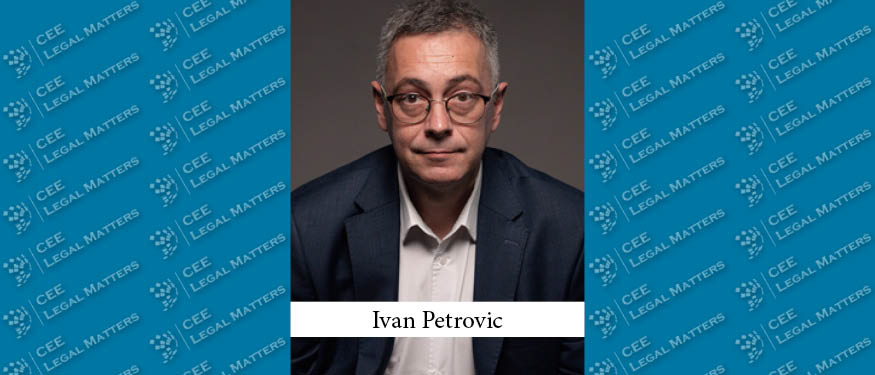The Extension of Time (EoT) mechanism is widely used in construction contracts to account for delays beyond the contractor’s control. However, under Serbian law, EoT is not a legally enforceable right even if explicitly agreed upon by the contracting parties. Instead, the legal framework provides contractors with protection through liability release provisions rather than proactive EoT claims. While legal theory suggests that standalone EoT claims could be admissible under specific conditions, Serbian procedural law and court practice currently do not support such claims. This paper explores the interplay between contractual provisions, Serbian statutory law, and procedural rules affecting EoT claims.
I Introduction
Extension of Time (EoT) is a legal institute broadly applied in the contracts. Defining of the legal nature of the EoT may be divergent. The majority would view an EoT as a right granted to a party that is unable to fulfill its obligation due to circumstances beyond its control. However, it can also serve as a preventive remedy when a party is mistakenly considered in breach for a delay that is not attributable to them.
The complexity of EoT legal institute is the most prominent in construction contracts. The construction affairs are followed by multiple relationships throughout the significant time period whereby a number of participants in the project and various external factors may cause or influence the delay. Standard forms of the construction contracts commonly impose sanctions for the breach or default through employer’s rights such as contractual penalty or right to deduct the payment.
Although the reasons giving the contractor the right to EoT are different in standard forms of construction contracts (FIDIC, ONORM, AIA, Consensusdocs, VOB/B), the grounds for EoT may be subsumed in two categories: Excusable Delays and Force Majeure.
The contractor’s right to claim EoT is predominantly followed by the right to claim costs. This entitlement is rational, especially for the cases of employer’s delays (or owner’s actions). However, in the case of external events such as “Acts of God”, unforeseen obstacles or abnormal weather, where the employer did not contribute to a delay in any manner, the contractor’s costs become crucial. In such cases the requests and entitlement to EOT put forward the claim for the costs which may challenge the financing of the project and jeopardize the employer’s plans in terms of the investment. Consequently, this fact leads to a number of disputes whereby the parties are testing the foreseeability of the event, or possibility of mitigating and similar.
The Serbian legal system follows the civil law tradition, where statutes and codified laws serve as the primary sources of law, while case law, with the exception of mandatory opinions of the Supreme Court of the Republic of Serbia, remains non-binding, having only an influential role.
The cornerstone of contractual relations in Serbia is the Law on Contracts and Torts (LCT), which sets out general principles, including the libertas contrahendi principle (freedom of contract). However, this principle is limited by the mandatory provisions of the LCT. Consequently, while parties are free to negotiate and enter into agreements, any contract (or contractual provision) that violates these mandatory rules will be deemed unenforceable by the court.
Beyond substantive legal sources such as contracts and the LCT, procedural law also plays a role. The Serbian Law on Civil Procedure governs the rules and procedures for resolving civil disputes and can affect the enforceability of certain legal institutes, including the EoT.
In practice, a contractually agreed right or entitlement may become uncertain when subjected to judicial review in a dispute resolution process.
II Serbian legislation and EoT
In Serbia, legislation governing construction-related contracts is primarily based on the LCT. This includes general principles, provisions on service agreements, and specific rules on construction contracts. In addition, parties to a construction contract may agree to apply the Special Usances on Construction (SUC).
The LCT does not explicitly regulate the EoT in any of the named contracts including the construction matters. It only mentions EoT as a possible compromise in settlement agreements. Even in this context, EoT is not recognized as an enforceable right before the courts but rather as an option that may be negotiated in a settlement.
By contrast, SUC provides more detailed regulation of EoT. It allows the contractor to request an extension in cases of changed circumstances or the employer’s default, provided that the default prevented the contractor from performing the work. SUC also non-exhaustively lists specific events that may justify an EoT.
SUC further requires timely notice and stipulates that the grounds for EoT must arise before the contractor itself is in delay. However, SUC does not specify the procedure for enforcing an EoT claim. Like a construction contract, it allows the contractor to request EoT from the employer, but it does not establish a dispute resolution mechanism for enforcing this right.
Crucially, SUC’s EoT provisions are not incorporated into the LCT, creating a significant legal gap. Under the LCT, a contractor is not liable for delays caused by the employer, such as failure to provide materials, failure to approve requested changes, or failure to make advance payments. More generally, if the delay results from the employer’s actions, the contractor may not be held responsible. While SUC allows the EoT in the event of “changed circumstances”, by LCT the “changed circumstances” entitle the contractor to request the termination of the contract by the court or arbitral tribunal, and the survival of the contract would depend on the willingness of the employer to agree on EoT.
However, the parties involved in construction contracts in Serbia commonly agree on the contractor's right to an EoT under specific circumstances. This agreement often stems from the adoption of the FIDIC general conditions of the contract, which provide detailed provisions regarding EoT rights for contractors. Nevertheless, the enforcement of this contractor right remains uncertain.
In a hypothetical scenario where the contractor faces delays attributable to the employer's responsibilities and the parties have not agreed on an actual EoT, the contractor would need to approach a court or arbitral tribunal to establish its entitlement to an EoT. Assuming the contractor incurs no costs or is not entitled to recover costs, the relief sought would involve determining the EoT, necessitating a declarative decision from the court or tribunal. If such a request is made to the court the claimant would be required to demonstrate a legal interest in filing the claim.This is because the Article 194, paragraph 2 of the Law on Civil Procedure stipulates that, “[a] declaratory lawsuit may be filed if the plaintiff has a legal interest that the court determines the existence or non-existence of a disputed right or legal relationship before the due date of a claim arising from that relationship, or to establish the truth or falsehood of a document, or if the plaintiff has some other legal interest.”
Legal interest for pursuing declaratory relief is established when (i) no alternative protection is available, (ii) there is an imminent risk of legal damage, and (iii) the decision could prevent future disputes and legal uncertainty. All these conditions must be met cumulatively. If the claimant fails to prove legal interest, the case will be dismissed.
Proving the necessary conditions to establish legal interest in a standalone claim for EoT is not feasible. The contractor has an alternative option to (i) file a claim for cost reimbursement, (ii) contest the employer’s claim for contractual penalties, or (iii) file a claim for payment of the contract price in cases of unjustified deductions or set-offs by the employer. Thus, the contractor is entitled to various legal remedies in performative lawsuits that safeguard its rights under the contract and the law. Performative decisions, which compel one party to act (or refrain from acting), do not require a determining decision to affirm entitlement to a right, as the determining decision is inherently included within the performative decision. When adjudicating a performative claim, the court will assess the existence or non-existence of a specific right or obligation during the proceedings and base its performative decision on that assessment.
Even if the contractor's claim for determining the contractually agreed EoT right were to be recharacterized as a standalone claim for establishing legal entitlement to release from responsibility for delays, in line with the mandatory provision of the LCT, the court's ruling would still be the same. The criteria of lacking alternative protection and facing imminent legal damage would not be satisfied, leading to a dismissal of the case.
Serbian legal theory is evolving to a position where standalone claims for determining EoT rights might be accepted by the courts. Although the prevailing legal theory argues that standalone determinations of the right to EoT or release from responsibility are not viable due to the option of raising claims in a performative context, some authors identify legal interest for standalone determinations of EoT or release from responsibility in scenarios involving a “risk of multiple disputes”.
The concept of “risk of multiple disputes” as a basis for existing legal interest is well-supported in legal theory. Commentators emphasize that multiple disputes can lead to contradictory decisions regarding entitlements to EoT or releases from responsibility. In such instances, the significance of legal uncertainty would escalate, making the existence or non-existence of the right to EoT or release from responsibility a pivotal issue for subsequent cases. A declarative standalone decision regarding the right to EoT would further mitigate disputes and enhance the principles of efficiency and cost-effectiveness within the LCP.
Adopting of the “risk of multiple disputes” as a legitimate legal interest needs to be tested in practice. So far, the Serbian courts are reluctant to assessing the existence of the legal interest, especially when the parties have an alternative mechanism to resolve the dispute through the performative claim. Although theoretically well supported, the risk of multiple disputes as the legal interest for filing performative claim for EoT or release from responsibility in construction affairs is difficult to imagine.
The risk of multiple disputes implies that there could be three or more disputes related to the project due to one delay event. However, such disputes would involve different parties such as subcontractors, suppliers, financial institutions or else. Even if EoT right would be determined by the court or arbitration, this right would originate from the contract between employer and contractor and neither the contractor nor the employer could use the declarative decision on EoT towards their other partners in the project. In the case of standalone decision determining the release from responsibility, the result would be the same since this right originates from the specific provision of LCT regulating the construction contract. At the end of the day, pursuant to the LCP the court or arbitration decision is legally binding only between the parties in the dispute and may be binding to third parties only in the case of the specific nature of the right determined by the court (such as ownership right).
Although the legal theory suggests that the standalone claim for determining the EoT entitlement would be admissible, it is hard to expect that the courts in the Republic of Serbia would accept to implement this theory in practice. The LCT provides the legal protection for the contractor through the “release of responsibility” institute allowing the contractor to claim the costs or claim the payment from the employer. Such a legal framework will allow the contractor to pursue its rights through the performative claim or to defend itself from the employer’s illegal claims. The arbitral tribunals, especially in the processes held before the international arbitral institutions, would most probably accept the standalone claim for EoT. However, the effect of arbitral decision granting EoT in the Serbian legal system would be questionable, especially in terms of the effect towards third parties.
Determining the release of responsibility under the LCT would also be inadmissible. The right for release of responsibility for the contractor arises from the imperative provision of the law and the contractor is entitled to a release of responsibility regardless of the contents of the respective contract. The strict assessment of the existence of the legal interest for such a claim would still be applied by the court. Since the contractor is released from the responsibility under the imperative rules of the law the court would consider that the alternative protection would be available. In addition, the pre-condition of “imminent legal risk” could easily be challenged since the : (i)“imminence” would exist only if there is a performative claim by the employer and (ii) “legal risk” implies a loss of right (not loss of monetary value) in the situation where the contractor gained its right directly by the law.
The release of responsibility under the LCT does not constitute a right for the party to make a proactive standalone claim for EoT before the court. When applying the Serbian law, the court or arbitral tribunal would not grant the contractor a right to EoT and, hypothetically determine that contractor’s entitlement to EoT and the duration of EoT. This allows the court to assess responsibility when deciding on a performative claim (request for payment) and to render a decision considering all the facts of the case. However, the imperativeness of article 607 of LCT may limit the decision makers where the allocation of the risks is employer friendly, especially in cases of concurrent delays attributable to both parties. The release of responsibility for the contractor in cases attributable to the employer may result in decisions where the contractor’s delay is completely neglected.
The Law on Contracts and Torts (LCT) was enacted in 1978, and while some may view it as outdated or insufficient for modern business affairs, its enduring relevance is a testament to its neutrality and simplicity. Despite significant changes in Serbia’s political and legal landscape, the LCT has proven resilient, adapting well to new circumstances. Its provisions continue to function effectively today, suggesting that introducing amendments to incorporate Extension of Time or other legal institutes may not be necessary. Overregulating certain areas of law could hinder the natural development of the legal system. The future applicability of EoT in Serbia likely lies in adopting specialized methodologies that provide experts with clear guidelines for assessing delays and incidental events in construction projects. Based on expert reports, courts and arbitral tribunals would be able to adjudicate claims from all parties, considering both the imperative norms of the law and the specific contractual provisions, ultimately ensuring fair and just decisions in matters of responsibility.
Conclusion
Although EoT is a common feature in construction contracts in Serbia, it does not constitute a legally enforceable right unless expressly agreed upon. The Serbian legal system does not provide a direct mechanism for contractors to obtain an EoT through courts or arbitration, particularly as a standalone claim. Instead, protection is offered through liability release rules, preventing employers from penalizing contractors for delays outside their control.
Legal theory suggests that standalone EoT claims could be recognized under specific circumstances, particularly if courts adopt the “risk of multiple disputes” doctrine. However, Serbian courts have been reluctant to depart from the principle that declaratory relief should only be granted when no other remedy is available. The future of EoT applicability in Serbia likely lies in improved contractual methodologies for delay analysis and independent expert determinations rather than statutory amendments.
In practice, contractors should ensure that EoT provisions are clearly defined in contracts and consider international arbitration for dispute resolution where possible. Courts will continue to rely on performative claims and liability release rules rather than proactively granting EoT entitlements. Thus, securing an EoT in Serbia remains primarily a matter of contract negotiation rather than judicial enforcement.
By Ivan Petrovic, Partner, JPM Serbia



